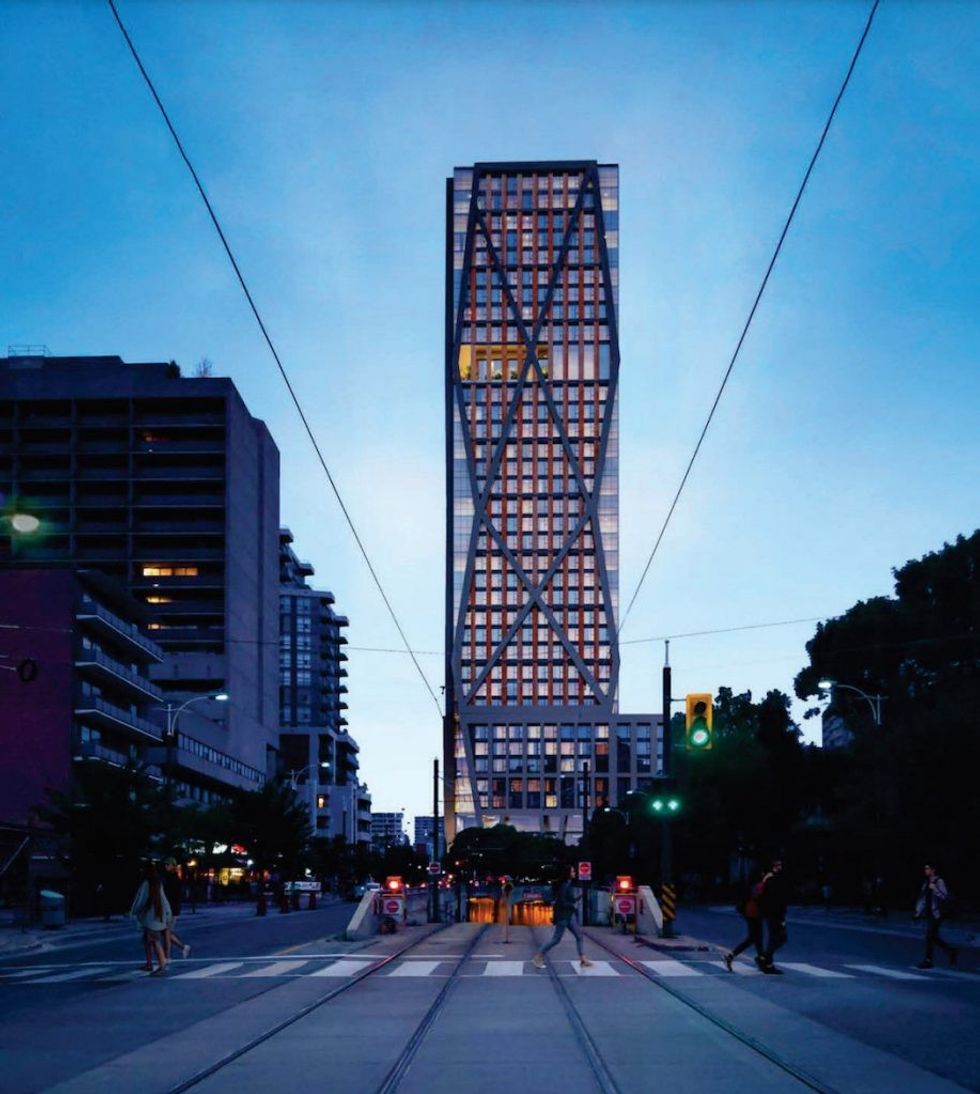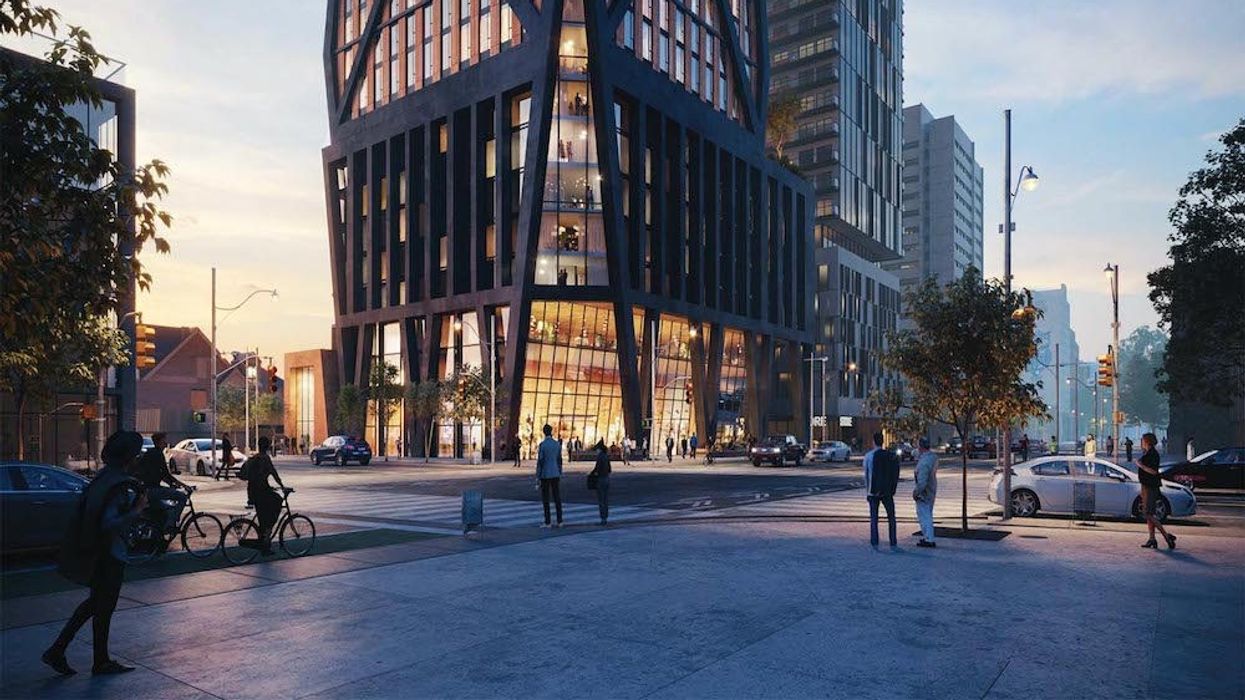As Toronto continues to grapple with a lack of housing, a recently proposed high-rise development would bring some much-needed units to an underutilized site in the Annex.
Earlier this month, First Capital REIT submitted a Zoning By-law amendment to City planners to construct a 37-storey, mixed-use, infill, residential building with 366 units at the heart of Bloor and Spadina.
The rectangular site is found on the northeast corner of Bloor Street West and Spadina Road, at 320, 328, and 332 Bloor Street West, directly adjacent to Spadina Station. The subject site is home to a three-storey building with ground floor commercial uses, including a bank and restaurants, and various commercial uses on the floors above, and a small surface parking lot located along Spadina Road.
While the majority of traffic in this area is foot traffic, given the location, the site offers convenient access to various transit options along both Spadina and Bloor, including streetcar and subway services.
READ: Derelict Wellington Destructor to Be Transformed into Community Hub
Given that the existing buildings on the site are not listed or designated as heritage properties, they would be demolished to facilitate the proposed development if it's approved.
If the proposal receives the green light to move ahead, the project would include: the widening of the existing sidewalks along Bloor and Spadina to facilitate a 37-storey tower comprised of an eight-storey podium with retail space at grade, a 29-storey residential tower above, the creation of two new publicly accessible open spaces (POPS) at the corner of Bloor and Spadina, and a mid-block connection to neighbouring Paul Martel Park.
The overall building height will be 114.92 metres including the mechanical penthouse, with the residential component spanning 31,231 square metres and the retail space fronting Bloor Street set to be approximately 627.9 square metres.
Of the 366 residential units, the breakdown would include 221 one-bedroom, 107 two-bedroom, and 38 three-bedroom suites. The units would have Juliette balconies instead of formal balconies to reinforce "the elegance of the tower."
Designed by BDP Quadrangle, the tower would feature a "metal calling architectural ribbon" that would wrap around the building facade. Within the ribbon, a combination of vertical terra cotta panels and vision glass gives the illusion of "the building being unwrapped on all facades, extending to the building base," according to the planning rationale.

The main residential entrance to the tower would be located in the northwest corner of the site off of Spadina Road, adjoining Spadina Station. A residential vestibule and corridor are proposed along the north edge of the property which connects to a secondary entrance via a corridor on the east side of the building at the proposed woonerf, which will provide vehicular access to an underground parking garage as well as pedestrian connection to Paul Martel Park.
The tower’s setback from the road would create an “increased pedestrian realm,” that would function as a POPS on the south and east sides, framed by the architectural pillars extending from the proposed building.

Long- and short-term bicycle storage would be located on the podium’s second floor, while a mix of residential units, indoor and outdoor amenity space, including a fitness centre, would be included on the third level. Additional amenity space would be located on the tower’s ninth and 19th levels, which will include flexible seating areas, outdoor dining, and barbeque areas.
A two-level underground parking garage is also proposed to provide 61 spaces for vehicles, while a total of 447 bicycle parking spots would also be included throughout the site.
Around the perimeter of the ground floor, in the public realm, a "rhythmic banding" of brick unit pavers and pockets of landscape planters and seating are also proposed to create a "sense of place and help animate the street."
Given the building's position and proximity to the TTC subway and streetcar entrance, the high-rise would offer residents ease of access to transit services.
Residents would also be a short distance from a mix of residential, commercial, institutional, and community uses, including the University of Toronto St. George Campus, places of worship, office buildings, commercial storefronts, public parks including Paul Martel Park, and community amenities such as the Miles Nadal Jewish Community Centre.





















